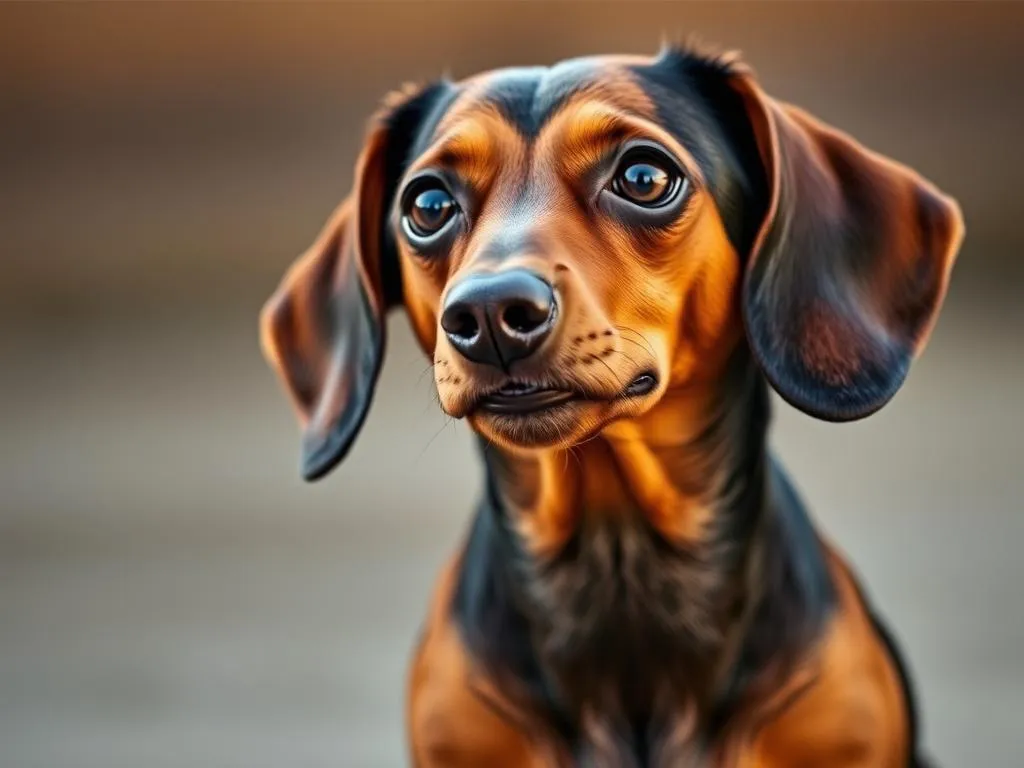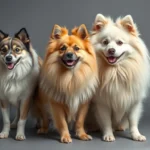
Introduction
Dachshunds, often affectionately referred to as “wiener dogs,” are a distinctive breed known for their long bodies and short legs. Originally bred to hunt small game, these dogs have evolved into beloved companions in households worldwide. Their unique appearance and lively personality have made them a popular choice among dog lovers.
The popularity of Dachshunds is reflected in their ownership statistics. According to the American Kennel Club (AKC), they consistently rank among the top ten most popular dog breeds in the United States, showcasing their widespread appeal. The purpose of this article is to delve into the fascinating world of Dachshunds, covering their history, characteristics, care requirements, training tips, and some fun facts about these charming canines.
History of the Dachshund
Origins of the Breed
The Dachshund breed can trace its roots back to Germany in the 15th century. Initially bred for hunting, their elongated bodies were perfectly suited to burrowing into the dens of badgers and other small animals. The name “Dachshund” literally translates to “badger dog” in German, highlighting their original purpose.
Dachshunds in Different Cultures
Throughout history, Dachshunds have been viewed in various lights. In Germany, they were celebrated as tenacious hunters, while in other parts of Europe, they were often seen as companions of the nobility. Their unique shape and playful demeanor captured the hearts of many, leading to their rise in popularity across different cultures.
Evolution of the Breed
Over the years, Dachshunds have undergone significant changes in both appearance and temperament. Originally, they were bred in multiple sizes, including standard and miniature, which are still popular today. The breed’s characteristics have also evolved, leading to the development of three coat types: smooth, longhaired, and wirehaired. This diversification has allowed Dachshunds to appeal to a broader range of dog lovers.
Characteristics of Dachshunds
Physical Traits
Dachshunds are characterized by their distinct shape and size variations. They come in two main sizes: standard (weighing between 16 to 32 pounds) and miniature (weighing 11 pounds or less). This size difference makes them suitable for various living situations, from apartments to large homes.
In terms of coat types, Dachshunds can be classified into three categories:
– Smooth: Short, shiny, and easy to maintain.
– Longhaired: Soft and flowing, requiring more grooming.
– Wirehaired: Dense and bristly, offering a unique texture.
Common color patterns include chocolate, black and tan, red, and dapple, showcasing the breed’s versatility in appearance.
Temperament
The personality of a Dachshund is as charming as its looks. These dogs are known for their friendly, curious, and loyal nature. They are typically good with children and, when socialized properly, can get along well with other pets. However, their hunting instincts can sometimes lead to a tendency to chase smaller animals.
Lifespan and Health
On average, Dachshunds live between 12 to 16 years, but like all breeds, they can be prone to certain health issues. Common problems include intervertebral disc disease (IVDD), obesity, dental issues, and certain skin conditions. Regular veterinary check-ups, a balanced diet, and maintaining a healthy weight are essential for preventing these health problems.
Care and Maintenance
Feeding and Nutrition
When it comes to feeding, Dachshunds require a diet that meets their specific nutritional needs. Puppies need a diet rich in protein and fat to support their growth, while adult dogs should have a balanced diet that maintains their health. Considerations for dietary restrictions may include allergies or sensitivities, so consulting with a veterinarian is crucial.
Exercise Needs
Despite their small stature, Dachshunds are energetic and require regular exercise to stay healthy. Daily walks and playtime are essential to prevent obesity and keep them mentally stimulated. Engaging them in activities such as fetch or interactive toys can provide valuable mental stimulation.
Grooming Requirements
Grooming needs for Dachshunds vary based on their coat type:
– Smooth: Typically requires minimal grooming, just occasional brushing to remove loose hair.
– Longhaired: Needs more frequent brushing to prevent tangles and mats.
– Wirehaired: Requires regular brushing and occasional hand-stripping to maintain its texture.
Bathing should only be done as necessary, and nail care is equally important to ensure their comfort.
Training and Socialization
Basic Training Techniques
Training a Dachshund can be both rewarding and challenging. They are intelligent but can also be stubborn. Positive reinforcement methods, such as treats and praise, work best. Begin with basic commands and housebreaking, keeping training sessions short and engaging to maintain their attention.
Socialization Importance
Socialization is critical for Dachshunds to become well-rounded pets. Introduce them to a variety of people, environments, and other dogs from a young age. This exposure helps them develop confidence and reduces the likelihood of behavioral issues later in life.
Behavioral Issues
Like all breeds, Dachshunds can face behavioral challenges. Common issues include excessive barking, digging, and separation anxiety. Addressing these problems early on through training and socialization can prevent them from becoming ingrained behaviors.
Fun Facts About Dachshunds
Unique Traits
One of the most fascinating Dachshund facts is their unique physical characteristics. Their elongated spines make them vulnerable to certain health issues, particularly related to their backs. Despite this, their determination and spirited nature often overshadow their physical challenges.
Famous Dachshunds in Pop Culture
Dachshunds have made notable appearances in pop culture, becoming symbols of affection and charm. One of the most famous examples is “Waldo,” the lovable character from the popular “Where’s Waldo?” series. Their adorable looks have also led to appearances in various movies, commercials, and even social media platforms.
Dachshund Competitions and Events
Dachshund races, often referred to as “wiener dog races,” are popular events at fairs and festivals. These lighthearted competitions highlight the breed’s playful nature and bring together owners and fans for a day of fun. Additionally, many Dachshund owners participate in dog shows and agility competitions, showcasing their pets’ skills and charm.
Choosing the Right Dachshund
Adoption vs. Breeding
When considering adding a Dachshund to your family, you have the option of adopting from shelters or breeding. Adoption can be a fulfilling experience, providing a home for a dog in need, while purchasing from a reputable breeder allows you to know the dog’s lineage and health history. Each choice has its pros and cons, so weigh your options carefully.
What to Look for in a Dachshund
When selecting a Dachshund, consider various traits. Look for a healthy dog with a friendly demeanor, and observe their interaction with people and other animals. If adopting, ensure the dog is up-to-date on vaccinations and has been socialized properly.
Questions to Ask Breeders or Shelters
If you decide to go through a breeder or shelter, ask important questions to ensure responsible ownership. Inquire about the dog’s health history, temperament, and any training or socialization they’ve received. Understanding the dog’s background will help you make an informed decision.
Conclusion
In summary, Dachshunds are a unique and beloved breed, known for their distinctive appearance and lively personalities. They require proper care, training, and socialization to thrive as loving companions. From their fascinating history to their playful antics, there is much to appreciate about Dachshunds. If you’re considering bringing one into your home, take the time to understand their needs and traits, ensuring a happy and healthy life together.









